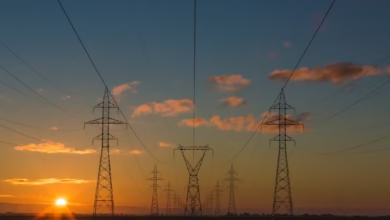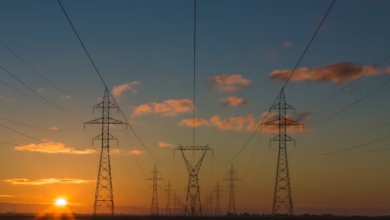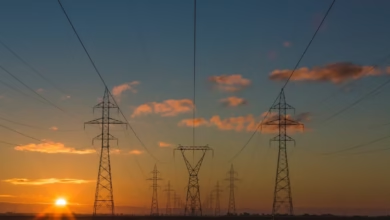Investing in Tomorrow: Navigating Energy Investment Trends and Financing Strategies in Renewable and Fossil Fuels

As the world grapples with the dual challenges of climate change and energy security, energy investment has emerged as a critical focus for governments, businesses, and investors alike. The transition towards a more sustainable energy future is driving substantial interest in financing and investing in energy projects that prioritize renewable energy sources and innovative technologies. This article delves into the evolving energy investment landscape, highlighting key trends and opportunities in both renewable and fossil fuels.
From solar power and wind energy to nuclear energy and hydropower, the shift toward green energy solutions is reshaping energy markets globally. With advancements in energy storage, carbon capture, and smart grids, investors are presented with a wealth of options to support energy innovations that enhance energy efficiency and facilitate the energy transition. Moreover, energy policy plays a pivotal role in shaping these markets, influencing everything from energy exports and imports to the development of distributed energy systems and electric vehicles.
Join us as we explore the complexities of energy investment, examining financing strategies for energy projects and the implications of global energy trends on the future of energy economics. Whether you are an investor or a policymaker, understanding these dynamics is essential for navigating the intricate world of energy investment in an era marked by rapid change and opportunity.
- 1. Navigating the Energy Investment Landscape: Key Trends and Opportunities in Renewable and Fossil Fuels
- 2. Financing the Future: Strategies for Investing in Energy Projects and Innovations
- 3. The Role of Energy Policy in Shaping Global Energy Markets: From Nuclear to Green Energy Solutions
1. Navigating the Energy Investment Landscape: Key Trends and Opportunities in Renewable and Fossil Fuels
The energy investment landscape is undergoing a significant transformation, driven by global energy trends and a pressing need for energy security and sustainability. As countries and corporations shift towards cleaner alternatives, the opportunities within renewable energy, fossil fuels, and emerging technologies are evolving.
One of the most notable trends is the increasing investment in renewable energy sources such as solar power, wind energy, hydropower, and bioenergy. These green energy projects not only promise potential returns but also align with global climate change goals and energy policy initiatives aimed at reducing carbon emissions. The growth of energy storage technologies is critical in this context, as it enhances the reliability of renewable sources, allowing for more effective integration into energy markets.
In parallel, fossil fuels continue to play a significant role in the energy mix, particularly in emerging economies where energy demand is soaring. However, the focus is shifting towards methods that enhance energy efficiency and minimize environmental impact, such as carbon capture technologies. This approach allows for continued use of thermal energy sources while addressing climate concerns.
Nuclear energy also remains a pivotal part of the energy transition, offering a low-carbon alternative to fossil fuels. Investments in next-generation nuclear technologies are gaining interest due to their potential for safer and more efficient energy production.
Additionally, the rise of smart grids and innovations in energy transportation are reshaping how energy is distributed and consumed. Distributed energy systems, including electric vehicles, are becoming integral to modern energy infrastructure, promoting a more decentralized energy economy.
Investors are increasingly looking at the intersection of energy R&D and energy innovations to capitalize on emerging technologies that enhance energy efficiency and storage capabilities. The focus on offshore energy projects, especially in wind and solar sectors, illustrates the commitment to diversifying energy portfolios.
In summary, navigating the energy investment landscape requires a keen understanding of the opportunities presented by both renewable and fossil fuel sectors. By keeping an eye on evolving energy policies and global trends, investors can position themselves to benefit from the ongoing energy transition while contributing to a sustainable future.
2. Financing the Future: Strategies for Investing in Energy Projects and Innovations
In today's rapidly evolving energy landscape, financing the future of energy projects requires innovative strategies that align with global energy trends and climate change initiatives. As countries shift towards renewable energy sources, the demand for strategic investments in various energy sectors is at an all-time high. Here are several key strategies for investing in energy projects and innovations that can drive the energy transition.
First, diversifying investment portfolios to include a mix of renewable energy sources such as solar power, wind energy, and hydropower is crucial. These green energy technologies not only reduce reliance on fossil fuels but also contribute to energy efficiency and sustainability. Investors should also consider emerging technologies such as hydrogen energy and energy storage solutions, which are essential for addressing the intermittent nature of renewable energy sources.
Another effective strategy is to leverage public-private partnerships (PPPs). Governments are increasingly offering incentives and subsidies for energy innovations that promote energy security and resilience. By collaborating with public entities, private investors can access funding opportunities that support projects in energy transportation and distributed energy systems. This collaboration can also enhance the viability of energy exports and imports, allowing countries to optimize their energy markets.
Moreover, staying informed about energy policy reforms and regulatory changes is vital for successful energy investment. Policymakers play a significant role in shaping the energy landscape through initiatives that promote carbon capture, smart grids, and energy R&D. Investors should engage with these developments to identify opportunities that align with their strategic goals and the broader aim of achieving a low-carbon economy.
Lastly, investing in technological advancements in thermal energy and offshore energy projects can yield significant returns. As the demand for electric vehicles and sustainable energy solutions grows, these sectors are poised for expansion. Investing in innovative companies that specialize in energy efficiency and carbon-neutral technologies can provide competitive advantages in the evolving energy markets.
In conclusion, financing energy projects requires a multifaceted approach that embraces renewable energy innovations, collaborative investment models, and a proactive understanding of energy policy. By adopting these strategies, investors can contribute to a sustainable energy future while also capitalizing on the economic opportunities arising from the global shift towards cleaner energy sources.
3. The Role of Energy Policy in Shaping Global Energy Markets: From Nuclear to Green Energy Solutions
Energy policy plays a pivotal role in shaping global energy markets, influencing the direction and pace of the energy transition toward sustainable solutions. As countries grapple with climate change and the need for energy security, policies are increasingly geared towards promoting renewable energy sources, improving energy efficiency, and reducing reliance on fossil fuels.
One significant trend is the shift from traditional energy sources, such as fossil fuels and nuclear energy, toward greener alternatives. Governments worldwide are implementing policies that support investments in renewable energy technologies like solar power, wind energy, and hydropower. These initiatives not only encourage energy investment but also facilitate the development of energy storage solutions, ensuring a stable and reliable energy supply.
Energy policy also directly impacts energy economics by influencing market dynamics. For instance, carbon capture technologies are being integrated into existing fossil fuel operations, allowing for a transitional approach that reduces greenhouse gas emissions while maintaining energy production. This balance is crucial for economies that are heavily reliant on thermal energy and fossil fuel exports.
Moreover, the rise of smart grids is transforming how energy is distributed and consumed. By enhancing energy efficiency and enabling more effective energy transportation, smart grids support the integration of distributed energy resources, such as rooftop solar panels and wind turbines. This shift enhances energy security and allows for a more resilient energy market.
In parallel, innovations in energy R&D are paving the way for future breakthroughs, such as hydrogen energy and electric vehicles, which are expected to play a significant role in the global energy transition. As countries increase their investments in these technologies, energy policy will continue to adapt, fostering an environment conducive to energy innovations.
Ultimately, the interplay between energy policy and global energy trends is crucial for achieving a sustainable energy future. Policymakers must consider the diverse energy landscape, including bioenergy and offshore energy projects, to create a balanced approach that addresses climate change while ensuring energy access and security for all. The ongoing evolution of energy markets will depend heavily on how effectively these policies are implemented and the level of investment they attract.
In conclusion, the energy investment landscape is rapidly evolving, shaped by significant trends and opportunities across both renewable and fossil fuel sectors. As we navigate this complex terrain, it becomes increasingly clear that strategic financing and innovative investment approaches are essential for driving the energy transition forward. The integration of energy policy plays a critical role in shaping global energy markets, influencing everything from nuclear energy initiatives to the expansion of green energy solutions like solar power and wind energy.
Investors must be attuned to emerging technologies and trends, such as energy storage advancements and carbon capture initiatives, which are pivotal for enhancing energy efficiency and security. The ongoing development of smart grids and distributed energy systems also presents promising avenues for investment, ensuring that energy transportation remains efficient and sustainable.
As the world grapples with climate change, the demand for clean, renewable energy sources such as hydropower, bioenergy, and hydrogen energy will only increase. This shift not only highlights the importance of energy R&D but also underscores the need for robust energy policies that support energy exports and imports while fostering innovation.
Ultimately, embracing a diversified approach to energy investment will be crucial in addressing the challenges of our time. By aligning with global energy trends and prioritizing sustainability, stakeholders can contribute to a resilient energy future that supports economic growth and environmental stewardship. The journey ahead is filled with potential, and those who invest wisely in this dynamic sector will be well-positioned to thrive in the new energy economy.





